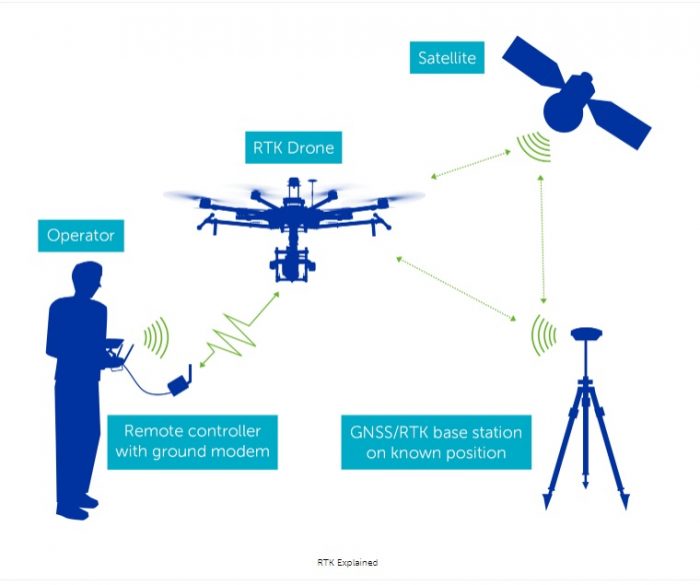Understanding the Crucial Functions and Features of a Drone Flight Controller for Optimal Aerial Performance
The trip controller offers as the pivotal component in a drone's design, managing its activities and ensuring stability with an advanced interaction of sensing units and information processing. With developments in technology, the landscape of flight controllers is swiftly advancing, triggering a better assessment of what genuinely specifies optimum capability in this essential system.
Overview of Flight Controllers
When exploring the world of drone technology, recognizing trip controllers is essential for both specialists and enthusiasts alike. Trip controllers work as the brain of the drone, managing its movements and guaranteeing security throughout flight (SparkNavi drone flight controller and GNSS/INS made in taiwan). They refine data from numerous sensors, consisting of gyroscopes, barometers, and accelerometers, to preserve balance and react to pilot inputs successfully
The architecture of trip controllers can vary substantially, ranging from standard versions created for entry-level drones to sophisticated systems outfitted with advanced attributes for professional applications. The assimilation of GPS capabilities makes it possible for precise navigating and positioning, while programmable firmware allows individuals to tailor flight attributes to suit their certain demands.
Furthermore, trip controllers are pivotal in assisting in interaction between the drone and the push-button control, making it possible for real-time adjustments and telemetry information transmission. Recognizing the different kinds of trip controllers, consisting of multi-rotor, fixed-wing, and hybrid systems, is important for picking the appropriate model for an offered application. Eventually, a thorough understanding of flight controllers not just boosts the flying experience however likewise makes the most of the efficiency and safety of drone procedures.
Key Features of Trip Controllers
Trip controllers play an essential role in taking care of a drone's flight dynamics by carrying out numerous key functions that make certain stability and responsiveness. One of the key features is the stabilization of the drone's orientation and altitude. This is achieved with the assimilation of various sensors, consisting of barometers, gyroscopes, and accelerometers, which constantly monitor the drone's position and movement.
.png)
One more vital feature is the handling of control inputs from the pilot or autonomous systems. The flight controller translates these inputs and changes the drone's electric motor rates accordingly to achieve the wanted trip course. This consists of managing yaw, roll, and pitch, which are essential for maneuverability.
In addition, flight controllers are outfitted with sound mechanisms. These features are developed to reply to vital scenarios, such as low battery degrees or loss of signal, by initiating predefined activities like returning to the launch point or hovering in place.

Essential Features to Consider
When choosing a drone flight controller to guarantee ideal performance and integrity,Various important attributes must be taken into account. One crucial facet is the controller's processing power, which determines its ability to deal with complex flight formulas and real-time information handling. A greater handling ability enhances responsiveness and stability throughout trip.
An additional crucial feature is the variety of supported flight settings. A functional flight controller need to provide numerous modes, consisting of acro, altitude hold, and GPS-assisted settings, accommodating various pilot ability levels and functional scenarios. In addition, the presence of integrated safety and security functions, such as fail-safes and geofencing, can significantly improve functional safety and security.
Compatibility with numerous communication procedures is additionally important, as it makes sure seamless combination with various other tools and peripherals, such as remote controllers and telemetry systems. The controller's firmware must be easy to use and consistently updated to incorporate new functions and optimizations.
Assimilation With Sensors and Solutions
A flight controller's efficiency is greatly affected by its capacity to incorporate with different sensors and systems. This integration is critical as it makes it possible for the trip controller to get real-time data needed for effective trip management. Secret sensing units include GPS, inertial dimension units (IMUs), measures, and magnetometers, each providing crucial information relating to the drone's alignment, placement, and elevation.

Additionally, progressed trip controllers support integration with payload systems, including video cameras and other sensors, enabling improved functionalities such as independent navigation and barrier evasion. This interconnectedness not only boosts the drone's operational pop over to these guys capacities however also broadens its application prospective across different sectors, from aerial photography to farming surveillance. Thus, a well-integrated flight controller is essential for attaining optimal aerial performance and making sure the integrity of drone operations.
Tips for Optimizing Performance
To make the most of the performance of your drone, a number of essential techniques can be utilized that focus on optimizing both hardware and software components. Ensure that the flight controller firmware is up to day.
Proper calibration decreases drift and boosts flight security, specifically during facility maneuvers. Top notch propellers can reduce drag and rise flight time.
Furthermore, maximize your drone's weight by reducing unnecessary hauls. A lighter drone not only executes much better but additionally prolongs battery life. Ultimately, tweak your flight setups, including PID (Symmetrical, Essential, Derivative) values, to achieve responsive and smooth handling. By executing these approaches, drone drivers can significantly enhance airborne efficiency, causing a much more efficient and enjoyable flying experience.
Final Thought
To conclude, a thorough understanding of drone trip controllers is vital for enhancing airborne performance. The integration of important features and crucial functions, consisting of processing power and safety and security systems, straight influences the security and maneuverability of drones. Effective communication with numerous sensors and systems plays an essential function in attaining precise navigating and functional performance. By prioritizing these components, operators can substantially boost the performance and dependability of their drone systems in diverse applications.
Flight controllers serve as the mind of the drone, coordinating its motions and guaranteeing stability throughout trip.Flight controllers play a pivotal function in handling a drone's trip dynamics by performing a number of vital features that ensure stability and responsiveness. The flight controller translates these inputs and readjusts the drone's electric motor rates Website accordingly to accomplish the preferred trip course.Many crucial features ought to be taken into account when choosing a drone flight controller to make sure ideal efficiency and integrity. Hence, a well-integrated trip controller is basic for attaining optimum airborne efficiency and making certain the integrity of drone procedures.
 Joshua Jackson Then & Now!
Joshua Jackson Then & Now! Keshia Knight Pulliam Then & Now!
Keshia Knight Pulliam Then & Now! James Van Der Beek Then & Now!
James Van Der Beek Then & Now! Atticus Shaffer Then & Now!
Atticus Shaffer Then & Now! Teri Hatcher Then & Now!
Teri Hatcher Then & Now!